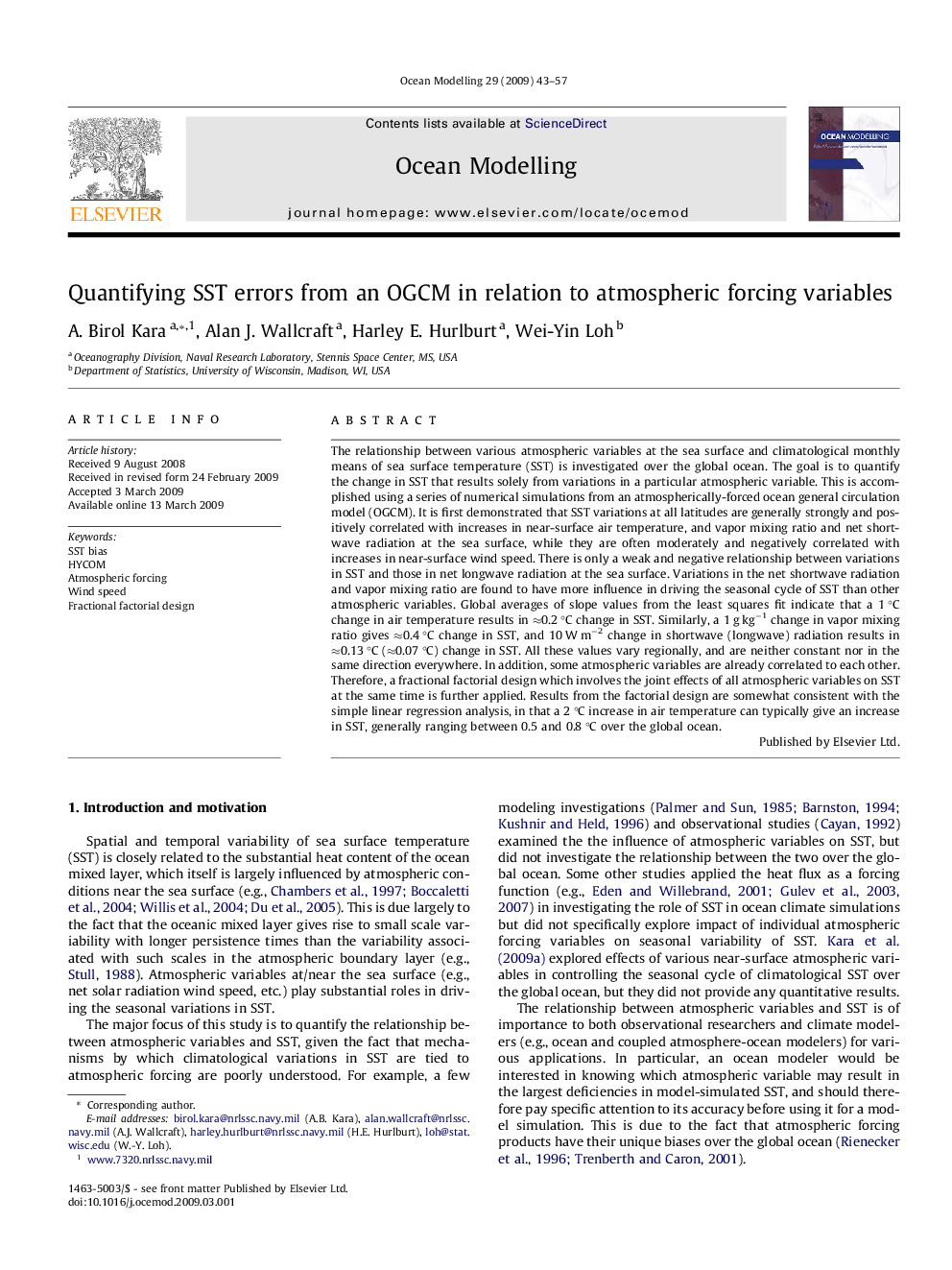| کد مقاله | کد نشریه | سال انتشار | مقاله انگلیسی | نسخه تمام متن |
|---|---|---|---|---|
| 4552578 | 1328736 | 2009 | 15 صفحه PDF | دانلود رایگان |

The relationship between various atmospheric variables at the sea surface and climatological monthly means of sea surface temperature (SST) is investigated over the global ocean. The goal is to quantify the change in SST that results solely from variations in a particular atmospheric variable. This is accomplished using a series of numerical simulations from an atmospherically-forced ocean general circulation model (OGCM). It is first demonstrated that SST variations at all latitudes are generally strongly and positively correlated with increases in near-surface air temperature, and vapor mixing ratio and net shortwave radiation at the sea surface, while they are often moderately and negatively correlated with increases in near-surface wind speed. There is only a weak and negative relationship between variations in SST and those in net longwave radiation at the sea surface. Variations in the net shortwave radiation and vapor mixing ratio are found to have more influence in driving the seasonal cycle of SST than other atmospheric variables. Global averages of slope values from the least squares fit indicate that a 1 °C change in air temperature results in ≈0.2 °C change in SST. Similarly, a 1 g kg−1 change in vapor mixing ratio gives ≈0.4 °C change in SST, and 10 W m−2 change in shortwave (longwave) radiation results in ≈0.13 °C (≈0.07 °C) change in SST. All these values vary regionally, and are neither constant nor in the same direction everywhere. In addition, some atmospheric variables are already correlated to each other. Therefore, a fractional factorial design which involves the joint effects of all atmospheric variables on SST at the same time is further applied. Results from the factorial design are somewhat consistent with the simple linear regression analysis, in that a 2 °C increase in air temperature can typically give an increase in SST, generally ranging between 0.5 and 0.8 °C over the global ocean.
Journal: Ocean Modelling - Volume 29, Issue 1, 2009, Pages 43–57